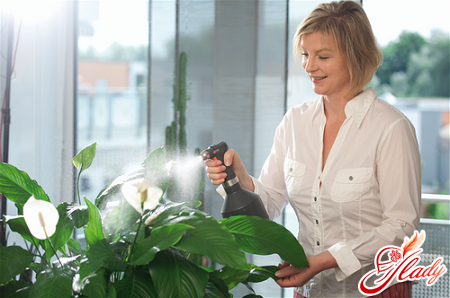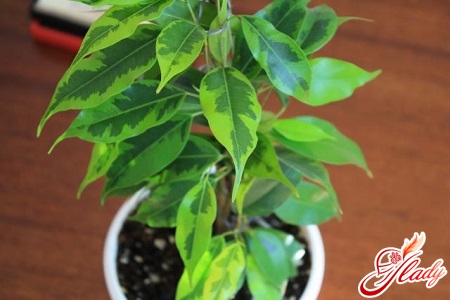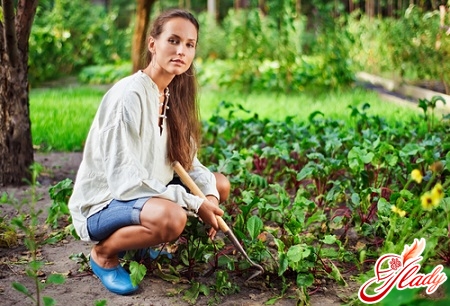
Cauliflower - annual vegetable plantfamily cabbage. Motherland - the Mediterranean, is also widespread in Western and Northern Europe. In Russia, cauliflower was imported from Europe in the 18th century, cultivated everywhere in small quantities. Valued for its early ripeness and taste and for not too complicated care. In food eat heads (modified inflorescences) plants containing many vitamins and mineral salts. It is very useful to consume cauliflower with gastrointestinal and cardiovascular diseases. The root system of cauliflower is located close to the soil surface and is developed worse than the root system of cabbage. After the formation of a rosette of 25-30 leaves an inflorescence is formed, which looks like a dense head of green, yellow, white or purple flowers. In general, cauliflower for growing is more demanding than other types of cabbage. Sensitively reacts to unfavorable conditions and care, although in general to heat is not demanding, but less resistant to lower temperatures than the same white cabbage. With their prolonged action, the growth of plants slows down, and the heads used in food are formed small. The optimum temperature for forming dense and large heads is 15-20 degrees. At a temperature above 25 degrees, small and loose heads are formed, especially when irrigation is not sufficient at this time. In addition to the ambient temperature, cauliflower is demanding for lighting conditions, especially during the growing of seedlings. In the conditions of a long daylight, the formation of plant heads is accelerated, but in the subsequent there is their growth and flowering shoots are formed. The artificial creation of conditions for a shorter daylight leads to the formation of denser heads and prevents the formation of flowering shoots. Of all the cabbage, the color is the fastidious to the composition of the soil, its fertility. The need for nutrients in it is twice as high as that of white-fodder. In addition to the main applied mineral and organic fertilizers, it is extremely necessary to feed manganese, magnesium, boron and molybdenum. With a shortage of trace elements, there is a slight development of the heads, the duplicity of the sticks, the leaves are deformed and the heads themselves usually rot. Currently, about 10 varieties of cauliflower are zoned. Early ripening (vegetation period - 85-100 days) - Movir 74 (suitable for canning), Early Gribovskaya 1355, Snowflake. Medium-term (vegetation period - 95-120 days) - Domestic (suitable for canning), Moscow canning and Guarantee. Late-ripening (vegetation period - 175-230 days) - Adler Winter 679, Adler Spring and Sochi.
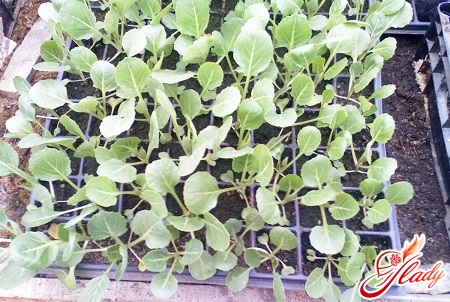
Cauliflowers: growing seedlings
Conditions for the cultivation and care of caulifloweralmost the same as in the cultivation of white cabbage seedlings. Seeds of early varieties are sown in seedlings, installed in heated greenhouses or other heated premises. For each seedling box, about 2-3 g of seeds prepared for sowing are used up. It is recommended to soak the seeds, for which they are placed in a gauze pouch filled with 0.5 volume and soaked in clean water at room temperature for 10-12 hours. The soil before the sowing is moistened and the seed is sown to a depth of no more than 1 cm. After seeding the seed is mulched with a thin layer of sand. Approximately two weeks after the emergence of seedlings, a seedling is seeded. Seedlings of the earliest planting dates are grown in peat-humus pots. Seedlings of later terms can be grown in a non-mustard way. For this purpose, the seedlings are dived into the peat-humus soil of greenhouse beds or in seedlings. With the formation of 2-3 real leaves, plants are fertilized with a solution of potassium or ammonium nitrate, for which 5 g of ammonia and 15 g of potassium nitrate are diluted with a bucket of water. When 3-4 leaves are formed on plants, foliar fertilizing is carried out by spraying with a solution of boric acid and molybdenum-acid ammonium (2 g per 10 liters of water). Seedlings are watered rarely, but abundantly, after watering the room is ventilated. Approximately two weeks before landing in the open ground, the seedlings are gradually hardened, accustoming plants to the temperature of the outside air. Seedlings are ready for planting at the age of 45-50 days. By this time, plants should have at least 4-5 leaves. 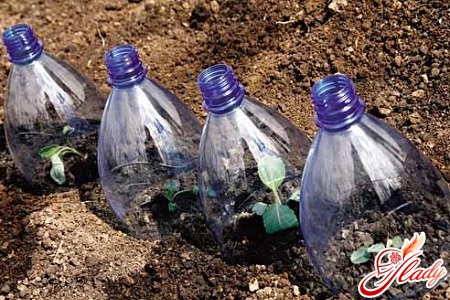
Cultivation of cauliflower in open ground
Regardless of the way of planting, do not forget thatcauliflower is planted on the site after such precursors as legumes or root crops, onions, early potatoes or early varieties of cucumber. When grown as a re-culture, cauliflower is placed after the early green cultures and sub-winter crops of root crops. Under the spring-summer cultivation of cauliflower, the soil is prepared from autumn. After harvesting the previous crop, it is carefully treated with a hoe to a depth of 6-10 cm. Then the site is dug by adding 7-8 kg of manure or peat bog compost per 1 sq. M, provided that they were not applied to the predecessors. In the spring, before planting, mineral fertilizers (ammonium nitrate - 30 g, potassium chloride - 20 g and 50 g superphosphate per 1 sq. M.) Are introduced into the soil and repeatedly dig it, carefully loosening the lumps. Seedlings of early cauliflower are planted according to the scheme 70x25 cm, medium-sized - 70x30 cm. Sometimes the rows are narrower (50-60 cm), and the distances in the rows are wider (40-45 cm). When planting seedlings in each hole add a pinch of ash, thoroughly mixing it with the ground. Then 1 liter of water is poured into the hole and plants are planted. After transplanting the seedlings are regularly watered until it adapts to the landing site. A week later the dead plants are replaced with new plants. Planting of seeds in the open ground is carried out to a depth of 1 cm. Seaweed, as a rule, is pre-soaked seeds. When the first real leaf appears, the plants are thinned and left between them 15-20 cm (with a row spacing of 70 cm) or 35-40 (with a row spacing of 50-60 cm). Further care for the crop is the same as caring for the seedlings. During the growing time, no less than 5-6 waterings (not less than 30 liters / square meter) are carried out. A prerequisite, especially during the formation of heads, is the loosening of the soil, which is carried out after each irrigation or rain. Care consists in the processing of rows and hilling of plants. If necessary, fertilize with a full mineral fertilizer. To grow a full-fledged harvest, the shading of cauliflower heads is mandatory during the period of their intensive formation. In addition, the two top sheets are tied over the head or broken. This is done so that the head does not disintegrate and retain its color. 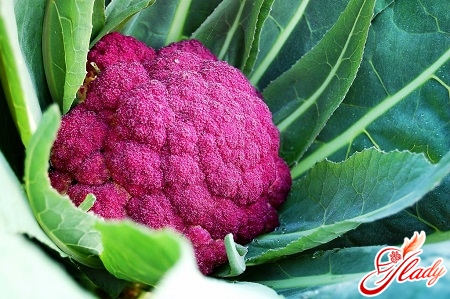
The secrets of harvesting
Proper care is not only cultivation, but alsocompetent harvesting. The cauliflower heads are removed when they reach a sufficient size. With 1 square meter of landings, 2 or more kilograms of heads are removed. Cut the heads together with 3-4 rosette leaves. Plants that do not have time to ripen before the end of the harvesting period are pulled out with the roots and used for their cultivation. For this, they should have heads about 5 cm in diameter and not less than 20 leaves. To grow them, they are placed in greenhouses or greenhouses that have been cleaned of biofuel, placing 35-40 plants per 1 square meter. Then the plants are covered with shields, mats, black film and are kept in the greenhouses at a temperature of 5 degrees. The hotbeds, as they cool down, are warmed with sawdust or other improvised means. Harvest such a harvest in December or January. Cultivate the heads of cauliflower can also be in cellars or cellars. In this case, the plants are tied up and suspended on the trellises by their roots upwards. At the end of the growing process, the mass of cauliflower heads reaches 0.5 kg, and the diameter - 15-20 cm. That's all the secrets - nothing complicated. The cauliflower heads are used for food in fresh, boiled, fried form. They are also marinated, used to make soups, casseroles, side dishes and salads.




